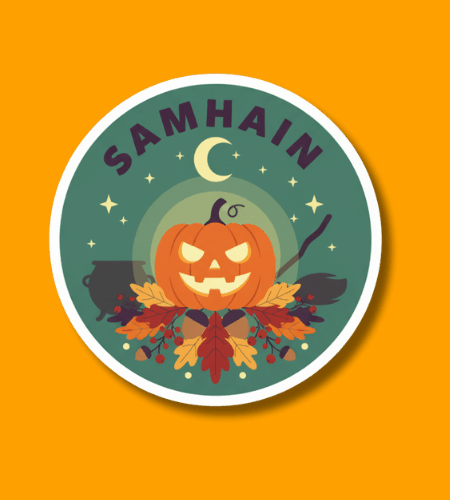The Samhain celebration on November 1 (observed from the evening of October 31) marks an ancient turning point when the harvest season ends and the darker half of the year begins. It reflects a time of change, remembrance, and letting go as nature shifts into the autumn‑to‑winter cycle.
Table of Contents
History of Samhain
Samhain has its roots in the deep past of the Celtic peoples, especially in what is now Ireland, Scotland and the Isle of Man. The word “Samhain” is often interpreted to mean “summer’s end” or “assembly,” signalling the end of the warmer season. It was one of four major Gaelic seasonal festivals, and for the Celts it marked not simply the finish of the harvest but a liminal moment—when summer slips away and the darker months begin.
At that threshold, many rituals and beliefs developed: communal bonfires were lit, hearth fires went out and were relit, and the boundary between the living world and the “otherworld” of spirits was believed to become more permeable. Over time, as Christianity spread, the date of November 1 became associated with All Saints’ Day, while the evening of October 31 shifted toward what we now call Halloween—but many of Samhain’s earlier themes remained.
Why is Samhain important?
Samhain matters because it invites us to pause and acknowledge the changing cycles of life, nature and time. When the Celts marked this moment, they acknowledged that what grows must in turn decline, and that entering the “darker half” of the year is both natural and meaningful. The rituals of Samhain remind us that transitions—whether seasonal or personal—are worthy of recognition, not just urgency.
Moreover, Samhain encourages the looking‑back as much as the looking‑ahead: the idea that those who came before us, the unseen or departed, have a place in our memory. As the veil between worlds is imagined to thin, we are reminded of connection, legacy and the importance of honouring what came before as we step into what comes next.
- It celebrates the turning of the seasons, helping us stay in rhythm with nature
- It offers a chance to acknowledge endings as well as beginnings
- It invites reflection on our ancestors, our past and our unseen connections
- It reminds us that the dark or less visible part of the year still has value and meaning
- It carries forward into modern traditions, offering continuity between past and present
How to Celebrate Samhain
Celebrating Samhain doesn’t require grand preparations—just a thoughtful acknowledgement of transition, memory and nature. You might light a small fire or candle in the evening of October 31 or November 1, symbolizing the hearth‑fire relit in ancient times, and sit quietly for a few moments to reflect on what you are letting go of and what you’re welcoming in. Perhaps set aside a place at your table or an item on your mantel for someone you’ve lost, acknowledging their presence in your life even if their body is gone.
Another simple activity: take a walk outside after dusk, noticing the changing light, the turning leaves, and the lengthening night. Let yourself feel the shift. Then, at home, consider sharing a modest feast of seasonal food—root vegetables, apples, hearty bread—and invite conversation about transitions in your life. These are small gestures but carry depth.
- Light a candle or bonfire (safely) to mark the threshold between seasons
- Create a little remembrance space for someone from your past
- Take an autumn evening walk, mindful of nature’s shift
- Share a seasonal meal and talk about endings and new beginnings
- Wear or display something simple that reminds you of the harvest’s end and the season ahead
Samhain Dates Table
| Year | Date | Day |
|---|---|---|
| 2025 | November 1 | Saturday |
| 2026 | November 1 | Sunday |
| 2027 | November 1 | Monday |
| 2028 | November 1 | Wednesday |
| 2029 | November 1 | Thursday |
Subscribe to our newsletter and never miss a holiday again!

